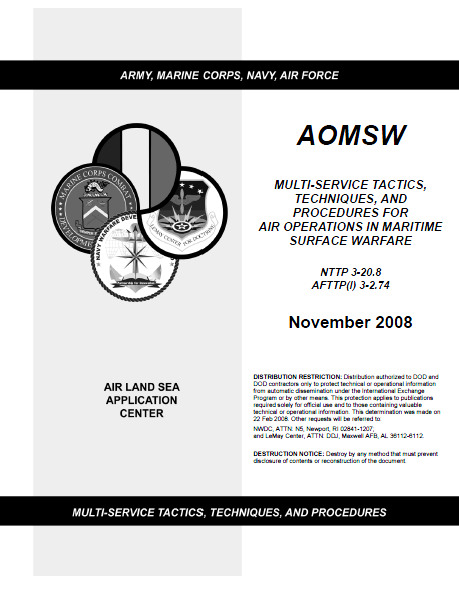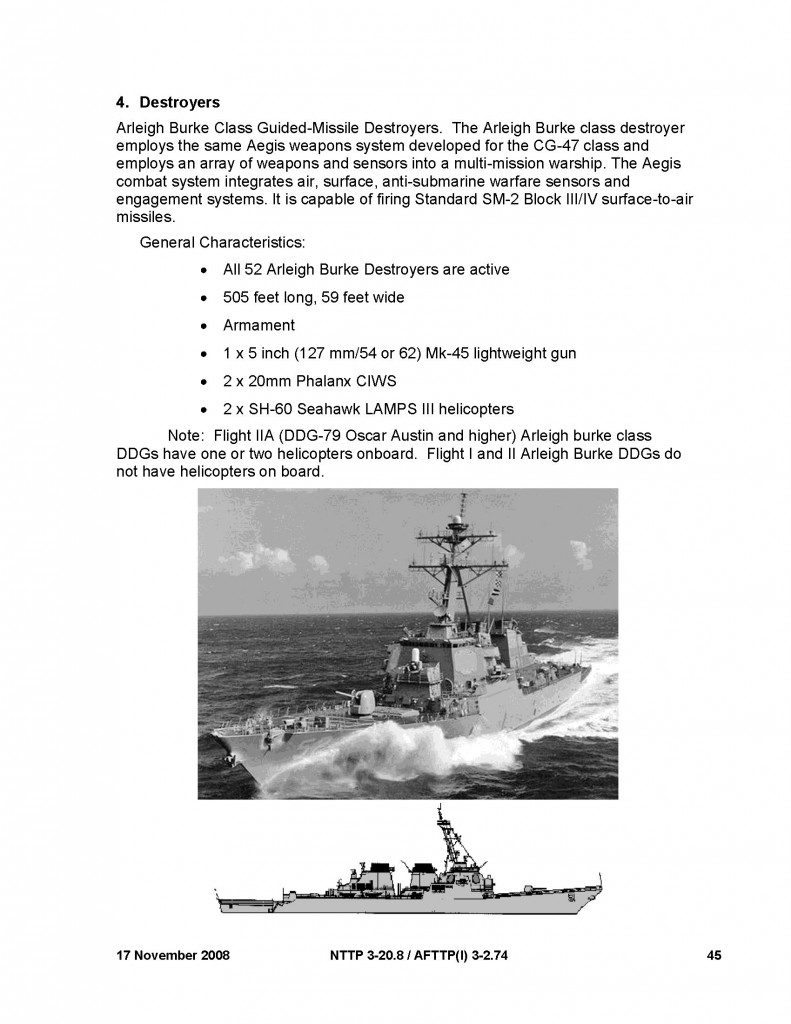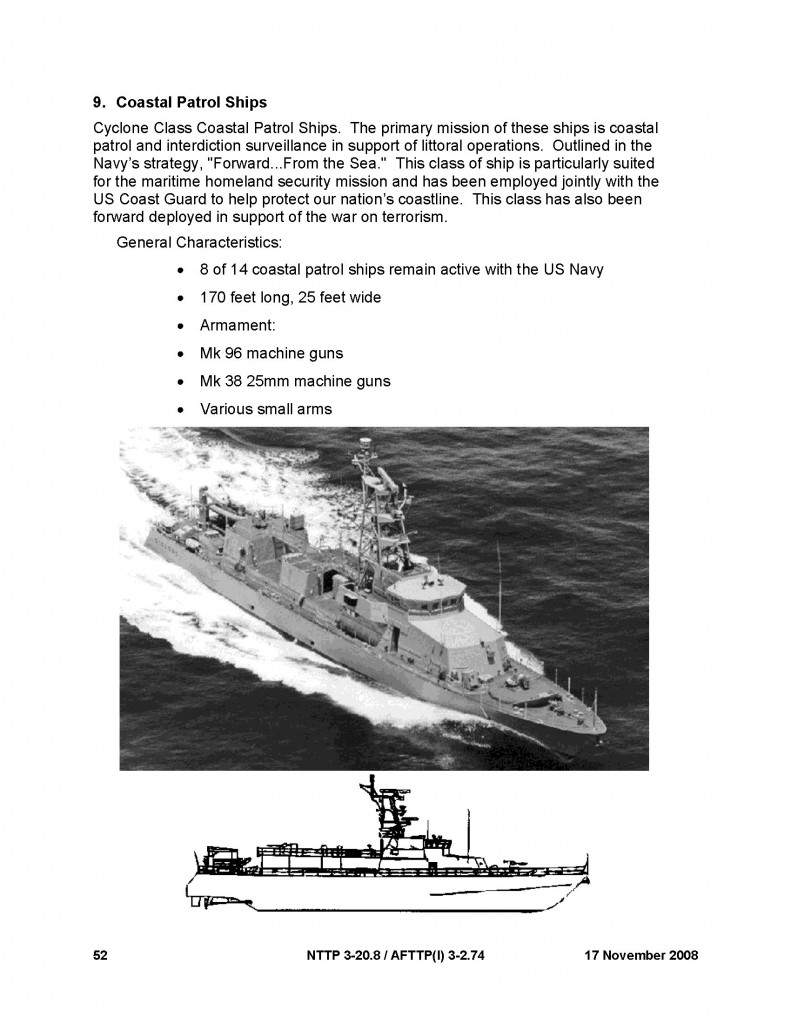The following manual was originally posted to Scribd in June 2011.
MULTI-SERVICE TACTICS, TECHNIQUES, AND PROCEDURES FOR AIR OPERATIONS IN MARITIME SURFACE WARFARE
- 78 pages
- Distribution authorized to DOD and DOD contractors only to protect technical or operational information from automatic dissemination under the International Exchange Program or by other means.
- November 2008
This publication provides multi-Service TTP for the seamless integration of air assets during the conduct of maritime surface warfare. The maritime domain is defined as the oceans, seas, bays, estuaries, islands, coastal areas, and the airspace above these, including the littorals. AOMSW is intended to support the joint force commander’s (JFC’s) objectives by providing capabilities/forces in support of joint maritime operations. The end state of this publication is a streamlined support process for maritime surface warfare within the joint force maritime component commander’s (JFMCC’s) area of operations (AO).
…
3. Surface Warfare Considerations
a. When the find, fix, track, target, engage, and assess (F2T2EA) steps of the joint targeting process are applied to the maritime domain operations are complicated by factors such as adverse weather; mobility; threats; intelligence, surveillance, and reconnaissance (ISR) capability; and weapons’ capability. To overcome limitations involved in completing the targeting process on maritime surface targets, this MTTP publication identifies tactical C2 factors, planning considerations, and execution processes in order to augment traditional naval roles such as:
(1) Protecting sea lines of communication
(2) Denying the enemy commercial and military use of the seas
(3) Establishing maritime power projection
(4) Protecting naval logistic support to forward deployed battle forces
b. While there are many similarities between air operations over land and sea, important differences exist:
(1) Lack of visual/terrain references at sea. The lack of visual references adversely affects not only the ability to navigate but also the ability to quickly orient an aircrew to the tactical picture for safety and targeting. The lack of terrain eliminates the capability of low altitude aviation assets to employ terrain masking for threat avoidance. Therefore, these assets will often be within range of a surface ship’s weapon systems when attack criteria are achieved.
(2) Target identification (ID). Similarities in ship design, appearance, and density of surface traffic require aircrew threat training tailored to the maritime environment.
(3) Naval vessel mobility. Surface vessel mobility negates the effectiveness of coordinate seeking weapons. A vessel’s mobility coupled with poor weather conditions can increase difficulties in performing visual identification and complicate targeting.
(4) Friendlies/Neutrals/Noncombatants. The vast majority of maritime vessels are commercial shipping representing every major nation in the world. Their presence in the midst of an emerging tactical picture has fratricide and collateral damage implications.
(5) Maritime rules of engagement (ROE). The maritime environment encompasses historical laws of the sea which impact ROE (e.g., territorial waters versus high seas).
(6) Maritime airspace control. Nearly every combatant has a powerful radar sensor/weapons system; as a result, maritime airspace control tends to be more positive vice procedural. This emphasis on positive control involves more controlling agencies within the maritime domain. (e.g., REDCROWN [RC], GREENCROWN [GC], STRIKE control)
(7) Tactical C2. While the maritime environment contains common tactical C2 such as a forward air controller (airborne) (FAC[A]) and a strike coordination and reconnaissance coordinator (SCARC), it also employs tactical C2 unique to the maritime environment such as a maritime air controller (MAC) and an aircraft control unit (ACU).
(8) Composite warfare commander (CWC) nomenclature. Maritime forces are scalable in size and capabilities; therefore, a unique naming convention has evolved to accommodate this scalability within the CWC command structure. See chapter II for additional details.
(9) Naval flight operations. The very nature of naval flight operations is that they are mobile; the large deck aircraft carriers and smaller combatant vessels possess aviation detachments. The location of high-density flight operations is ever changing, requiring constant coordination for safe deconfliction.
(10) Sub-surface operations. Deconfliction of surface warfare and subsurface operations will be coordinated at the CWC level. Aircrew should immediately report the location of all submarines, when spotted, to the CWC.
…



